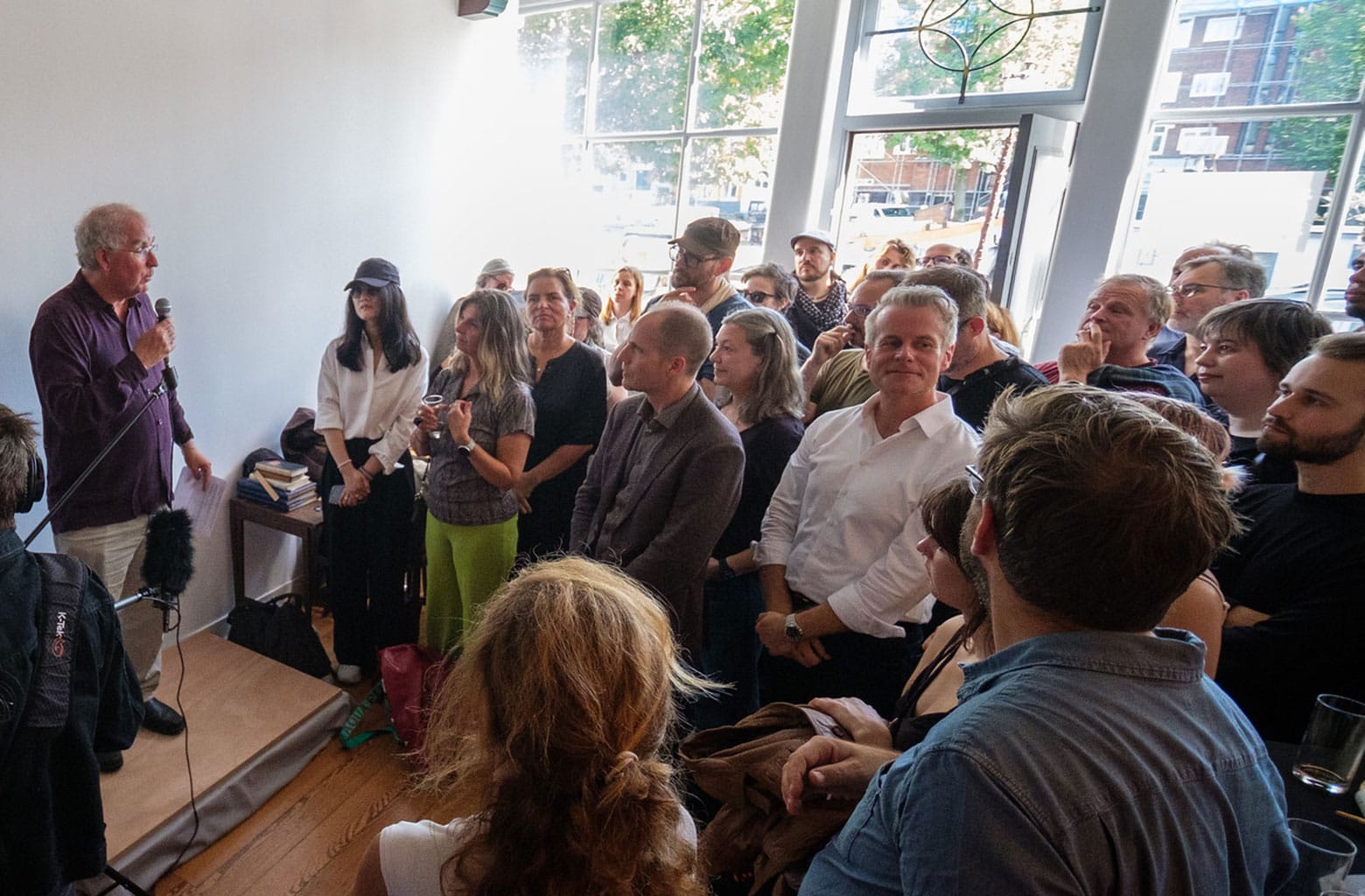Last week, the new headquarters of Internet Archive Europe at Oudeschans came alive with voices, laughter, ideas, and shared commitment. What had been a milestone in planning and construction became, for a few hours, something far more alive—an affirmation of what it means to protect, to remember, to build for the future.
The Rampart of Oudeschans: History, Meaning, Metaphor
To stand at Oudeschans is to feel history underfoot: the Old Rampart dates back to Amsterdam’s early 16th century, when a canal, moat, and wall were constructed to protect the eastern flank of the city. These earthen walls, wooden palisades, and waterworks defended Amsterdam from external threats, serving as vital structures of protection. As time passed, the military purpose of the walls faded. The ramparts were gradually absorbed into urban growth, as canals, quays, neighborhoods, and the daily lives of Amsterdam’s citizens evolved. What had once been a bulwark against danger became part of the living city.
And on that open house day, Internet Archive Europe embraced that same legacy, the responsibility of being a living rampart for memory.
Defending Memory in a Digital Age
Why does Europe need a rampart of memory today? Because digital content is peculiarly fragile:
- Websites vanish. Links rot. Formats become unreadable.
- Cultural artifacts stored only digitally can be lost without proper infrastructure or foresight.
- Legal, technical, and funding challenges threaten access to knowledge.
In this sense, the Internet Archive Europe is building something essential: walls of protection, yes — but also channels of access, transparency, collaboration. Not isolation, but integration: with libraries, with AI, with policy, with the public.
Faces Old and New: The Community Comes Together
The event was, above all, a gathering of friends—those who have walked alongside Internet Archive Europe from its early days, and many who are meeting its mission freshly, for the first time.
- Among the old friends were heritage librarians, digital preservation experts, longtime collaborators from European libraries and museums, and policy advocates who have argued for open access and digital rights. These people know the fragile terrain: disappearing websites, vanishing metadata, legal grey zones.
- The new friends included technologists drawn by the promise of public AI tools; scholars excited by what “bringing collections to life” could mean; younger activists and students eager for ways to help safeguard memory; and representatives of smaller language communities and underserved institutions who saw potential for more equitable access and new infrastructure.
Together, old and new, they wove conversation: what is being preserved, how, for whom, and what tools are truly needed to keep memory alive.
Words and Code: Visions for a Shared Future
The buzz of conversation gave way to a series of inspiring presentations that framed the day’s purpose.
Brewster Kahle, digital librarian and founder of the Internet Archive Europe, perfectly captured the spirit of the event. He envisioned the historic location as a place where this “17th century building… can once again help foster openness with new technologies” as we all “strive for a healthy information ecosystem.” The ultimate goal, he explained, is not to create “a game of a few big winners,” but to build a system where “everyone prospers based on our shared cultural heritage.” This collaborative ethos was echoed by Wilma Van Wezenbeek, General Director of the KB Nationale Bibliotheek, and further explored by voices from the technological frontier, including Daniel Erasmus of Digital Thinking Network Foundation, Ben Cerveny from the Foundation for Public Code, and Kai Jauslin of Nextension.
This vision was made tangible through compelling live demonstrations, where Daniel, Ben, and Kai presented different tools that harness AI for the public good with Climate GPT, the Web Archiving display, and the Spacecraft experience. Attendees witnessed firsthand the novel ways in which memory organizations can bring collections to life, creating new pathways for discovery and interaction with our shared history.
Conclusion: Custodians of Our Future Memory
As the old ramparts of Amsterdam once protected lives, commerce, and ideas, so too is Internet Archive Europe aiming to protect our collective past to enable our collective future.
What we preserve now will be what our future selves can touch, learn from, and build on. Internet Archive Europe’s open house was a reminder that memory, digital and analog, must be defended—not by walls alone, but by hands, minds, policies, and trust. Let’s ensure that what matters — knowledge, culture, memory — is not lost but sustained, accessible, alive.
Join Us
The Internet Archive Europe Headquarters is thrilled to announce it will soon offer weekly reading room hours and play host to the Open World community with lectures, meetups, and hackathons. We welcome your participation, so please sign up to our quarterly newsletter and stay up-to-date with our activities and projects.

Photo credit: “Internet Archive Europe Open House, 19 September 2025” by Sebastiaan ter Burg, CC BY 4.0



